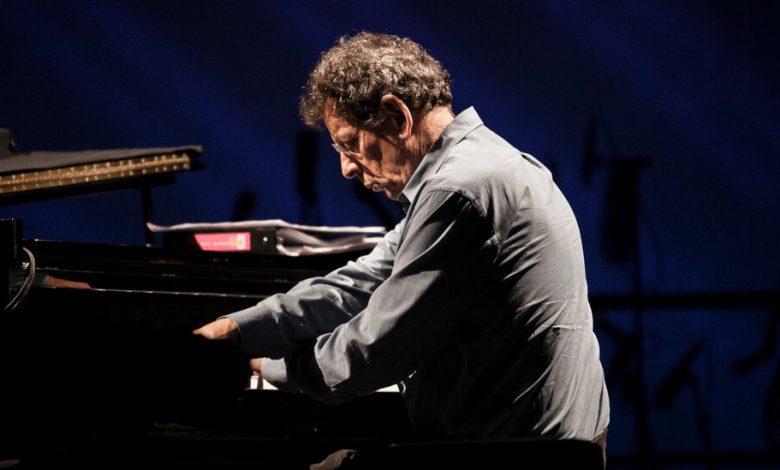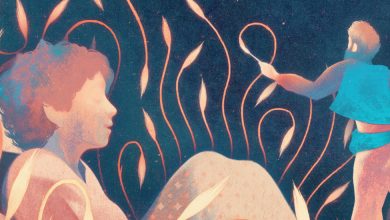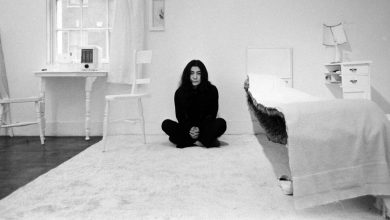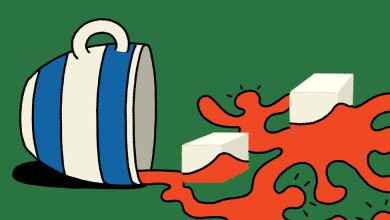Philip Glass’s Piano Etudes: A Diary of an Influential Life

Philip Glass wanted to become a better pianist.
He didn’t study the instrument in earnest until he was 15. And by the time he was 30 and founding an ensemble — to perform his pathbreaking music of repetitive structures — he needed to be good enough to keep up with his colleagues.
So Glass turned to Charles-Louis Hanon’s classic “The Virtuoso Pianist in Sixty Exercises.” Eventually, he took a crack at writing some études himself. “They were totally about my own limitations, in pursuit of technique,” he told the public radio personality Ira Glass, his cousin, in an interview for a new collection, “Studies in Time: Essays on the Music of Philip Glass.”
“I was not trying to compose like Scriabin or Rachmaninoff, who were demonstrating the techniques they already had,” Glass added, characteristically underselling himself. Those études, from the early 1990s, may be aspirational in technique, but they are assured in craft: portals into Glass’s world of whirling arpeggios, shocking rhythmic and harmonic turns, and meditative discipline.
Once the conductor and pianist Dennis Russell Davies, the reigning interpreter of Glass’s symphonic music, heard about the études, he commissioned a set of six for his 50th birthday in 1994. Those turned into 10, each focused on a specific technical challenge. And then 10 turned into 20, completed in 2012 for another birthday: Glass’s 75th.
Now a generation of artists has come of age with Glass’s études. Choreographers have used them for brief, charged dances. And pianists have interpreted them with a wide range of approaches, like the straightforward, crisp treatment by Maki Namekawa, Davies’s wife, who gave the first performance of the whole set a decade ago; or the soft-spoken, sensitive account that Vikingur Olafsson released in 2017.
This month, audiences and artists alike have new ways to take in Glass’s études. At David Geffen Hall on Nov. 19, a group of 10 pianists will gather to perform the entire études for a densely kaleidoscopic program that will run about two and a half hours. Then, starting Nov. 28, the Joyce Theater will present “Dancing With Glass: The Piano Etudes,” a program of works from five choreographers, including Lucinda Childs and Justin Peck. And a handsome, informative new folio collection of the études — edited by the composer-performer Timo Andres and Cory Davis from Glass’s publisher, Dunvagen Music — has just been packaged with “Studies in Time” and published by Pomegranate Arts, producers long associated with Glass.
It’s an unexpected landing for a project that started as personal exercises. But today, the études are spoken of in the same breath as those by Chopin and Debussy. And their influence extends beyond the world of keyboard playing. “Studies in Time,” edited by Linda Brumbach and Alisa E. Regas of Pomegranate Arts, includes surprising contributions from, among others, the filmmaker Martin Scorsese, the artist Maira Kalman and the chef Alice Waters.
“What strikes me — aside from their extraordinary range of mood and feeling — is how they represent a life of practice,” Waters wrote. And practice not just for Glass. The first 10 études, more focused and less difficult than the comparatively rhapsodic and occasionally cosmic later set, can be played by the average amateur. And unlike the technical pieces in Hanon’s exercise book, they are rewarding from a purely musical perspective.
The artist and musician Laurie Anderson wrote in “Studies in Time” that the études can sound to her like voices: “There’s the stumbling and the trembling of voices. There’s chatting, joking, brisk analysis, rambling, explaining, crooning, grumbling, shouting; there’s the confident attorney rolling out the arguments; there are rules and regulations being spelled out, prayers, announcements, shouts of joy.”
That quality of Glass’s music — patterns and repetitive phrases infused with so much character — is in part what has made it a perennial draw for choreographers. (Movement of all kinds, really: Last year, Anderson D.J.’ed a party for his 85th birthday at the Rockefeller Center ice skating rink, and wrote that she can now “say with confidence that Philip Glass didn’t write anything you can’t skate to.”) It has become so common for dances to be set to his music, Peck said in an interview, that he had long found himself resisting it.
“But,” he added, “I’ve always loved the music.” As a teenager, he saw Jerome Robbins’s “Glass Pieces” at New York City Ballet. It felt “like I’d experienced vanilla, chocolate and strawberry ice creams,” he said, “and then someone discovered you can make ice cream with pistachios.” He ended up choreographing to Glass for “In Creases” at City Ballet in 2012, and created a new solo, set to the Sixth Etude, for the program coming to the Joyce.
Lucinda Childs, the postmodern dance-maker who has had a relationship with Glass and movement going back to “Einstein on the Beach” in the mid-1970s, said his music has always felt like a “sounding board.” They later collaborated on “Dance” (1979), which she described as controversial at its premiere, with its repetitions prompting exasperated audience members to walk out. (That work was recently revived by Lyon Opera Ballet at New York City Center; when she and Glass saw how it was received there, she said, it was “kind of a joke for us because it’s become a classic.”)
Then and now, Childs said, she has felt “a tremendous freedom” within his carefully structured scores. For example, the Joyce’s program features a duet of hers set to the 18th Etude. “My first reaction is just to listen,” she said — to the Rachmaninoff-esque shading, the mellowness and alluring romanticism. “There’s passion in this music. I like the idea of that.” From there, she took her work into the studio, eventually bringing in dancers, for a process that she described as fundamentally intuitive.
Peck similarly described his étude, the Sixth, in poetic rather than structural terms. “There’s this layer of anxiousness in it,” he said. “It made me feel something emotional, almost like being in a waiting room and not knowing what test results you’re going to get. And the amount of time the étude takes, it feels like an eternity.”
Not everyone has such strong emotional reactions to the études. Some have found them downright unmusical. “There’s always been a cadre of people, specifically in the more entrenched classical music world, for whom Philip’s music does nothing,” said Andres, the composer and editor of the new folio set, who is performing in the Geffen Hall concert. “What Philip would say is, there’s plenty of other music in the world.”
If there is any agreement on the études, it may be about their specific difficulties. Like works by Mozart, they sound easier than they are, and punish anything short of precision in players. They demand metronome-specific steadiness and crystalline articulation, without sacrificing expression or shape, sculpted over several bars or several slow lines of score.
They teach pianists, Davies said, to “be relaxed when dealing with a technical problem, while also building up endurance.” Otherwise, playing the music becomes physically painful. He recalled the story of a musician running out of the orchestra pit during the premiere of Glass’s opera “Satyagraha” because his arm was hurting so much; the études, he added, also “expose weaknesses in anyone’s technique” that can lead to discomfort.
Namekawa, who is performing at both Geffen Hall and the Joyce, warms up for them by playing Bach. Before she brings the Fifth Etude onstage, she will try out a Bach invention in her dressing room, with an ear focused on “the really tiny changes” because in both cases, “the beauty is in tiny changes.”
Glass has performed from only the first set of 10 études; he didn’t care as much about whether he could play the second half, which, Davies said, goes beyond “thinking about what’s possible.” By the 20th, Glass achieves a tone poem more like “a benediction,” Davies added. (But these are still exercises. Andres called the 20th “a really good technical étude for legato playing.”)
Through all of them, Glass repeats not only short phrases but entire sections, like Schubert, with whom he shares a Jan. 31 birthday. Both composers, Namekawa said, are “always right, very correct” in their use of repetition. And unlike Baroque composers, they don’t use recursive gestures to welcome ornamentation: When something repeats, it returns in identical form.
Yet it feels different, Andres said. “When I get to the end of No. 6, for example, when that melody comes back, it has a completely different meaning than it did at the beginning of the piece,” he added. “There’s a settling, a resignation.”
In Andres and Davis’s new folio edition of the études, assembled from Glass’s manuscripts, it’s easier to track changes in the music, particularly in the rhythm. Glass wrote with a shorthand that flags shifts more clearly than the comparatively spelled-out version published in 2014. “It’s like reading a sentence,” Andres said. “You’re not reading one word at a time, or one letter at a time. When you’re reading music, the more you can break it down into chunks and the more it makes sense grammatically, the smoother and more pleasurable the reading experience.”
With more than one edition now available to players, Glass’s études are starting to look more like classics. They also double as a kind of musical autobiography. “He composed the whole thing in 20 years,” Namekawa said. “It’s a diary. You can see his thoughts and his compositional technique.”
In that sense, the études are also something of a guide to Glass. “The thing all the great étude sets have in common is that they’re not just technical études,” Andres said. “They’re études, in a way, for understanding the composer’s language. If you were to learn Philip’s études, you would have a very good overview of his music over his career. You could say the same of Chopin and Debussy and Ligeti études. They’re compendiums: The whole is greater than the parts.”




